 | TODAY IN SCIENCE HISTORY
NEWSLETTER - 8 JUNE |
On 8 Jun 1786, the first American advertisement for commercially-made ice cream appeared in the New York Post Boy. Other details of the history of ice cream in American vary depending on the source, but books seems to agree on the fact of the date of the advertisement.
A Harper's Bazaar article on the Origin of Ice Cream (1899) provides some more information.
|
 On 8 Jun 1955, Tim Berners-Lee was born, the English computer scientist who invented the World Wide Web when he thought "Suppose all the information stored on computers everywhere were linked?" Today's Science Store pick is: Weaving the Web: The Original Design and Ultimate Destiny of the World Wide Web, by Tim Berners-Lee, in which he provides a lucid but impersonal memoir and conveys some of the vital history and intriguing philosophy concerning the Internet. He coined the acronyms URL, HTML and the "World Wide Web." Who better to write on this subject? Available Used from $0.01 (as of time of writing). On 8 Jun 1955, Tim Berners-Lee was born, the English computer scientist who invented the World Wide Web when he thought "Suppose all the information stored on computers everywhere were linked?" Today's Science Store pick is: Weaving the Web: The Original Design and Ultimate Destiny of the World Wide Web, by Tim Berners-Lee, in which he provides a lucid but impersonal memoir and conveys some of the vital history and intriguing philosophy concerning the Internet. He coined the acronyms URL, HTML and the "World Wide Web." Who better to write on this subject? Available Used from $0.01 (as of time of writing).
Yesterday's pick: The Invisible Universe: The Story of Radio Astronomy, by Gerrit Verschuur,
For picks from earlier newsletters, see the Today in Science Science Store home page. | |
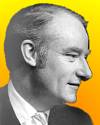 | "The major credit I think Jim and I deserve ... is for selecting the right problem and sticking to it. It's true that by blundering about we stumbled on gold, but the fact remains that we were looking for gold. Both of us had decided, quite independently of each other, that the central problem in molecular biology was the chemical structure of the gene. ... We could not see what the answer was, but we considered it so important that we were determined to think about it long and hard, from any relevant point of view." - Francis Crick, British biophysicist (born 8 Jun 1916)  |
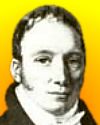 | "I never know whether to be more surprised at Darwin himself for making so much of natural selection, or at his opponents for making so little of it." - Robert Stevenson, Scottish civil engineer (born 8 Jun 1772)  |
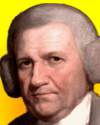 | "Stone, wood and iron are wrought and put together by mechanical methods, but the greatest work is to keep right the animal part of the machinery." - John Smeaton, English civil engineer regarded as the father of civil engineering in Britain (born 8 Jun 1724)  |
| Before you look at today's web page, see if you can answer some of these questions about the events that happened on this day. Some of the names are very familiar. Others will likely stump you. Tickle your curiosity with these questions, then check your answers on today's web page. |
 |  This British biophysicist, born 8 Jun 1916, with James Watson, received a share of the 1962 Nobel Prize for Physiology or Medicine for their determination of the molecular structure of deoxyribonucleic acid (DNA), the chemical substance ultimately responsible for hereditary control of life functions. This accomplishment became a cornerstone of genetics and was widely regarded as one of the most important discoveries of 20th-century biology. This British biophysicist, born 8 Jun 1916, with James Watson, received a share of the 1962 Nobel Prize for Physiology or Medicine for their determination of the molecular structure of deoxyribonucleic acid (DNA), the chemical substance ultimately responsible for hereditary control of life functions. This accomplishment became a cornerstone of genetics and was widely regarded as one of the most important discoveries of 20th-century biology.
 Can you name this man? Can you name this man? |
 |  John Smeaton, born 8 Jun 1724, was a English civil engineer and designer, regarded as the father of civil engineering in Britain. In 1756-59 he built the third lighthouse at Plymouth, Devon, using dovetailed blocks of portland stone. He was the first to recognize what constitutes a hydraulic lime when he discovered the best mortar for underwater construction to be limestone with a high proportion of clay. Smeaton also: constructed the Forth and Clyde Canal in Scotland between the Atlantic and the North Sea; built bridges in towns including Perth, Banff, and Coldstream, Scotland; and completed Ramsgate harbour, Kent. He introduced cast-iron shafts and gearing into wind and water mills, designed large atmospheric pumping engines for mines, and improved the safety of the diving bell.) John Smeaton, born 8 Jun 1724, was a English civil engineer and designer, regarded as the father of civil engineering in Britain. In 1756-59 he built the third lighthouse at Plymouth, Devon, using dovetailed blocks of portland stone. He was the first to recognize what constitutes a hydraulic lime when he discovered the best mortar for underwater construction to be limestone with a high proportion of clay. Smeaton also: constructed the Forth and Clyde Canal in Scotland between the Atlantic and the North Sea; built bridges in towns including Perth, Banff, and Coldstream, Scotland; and completed Ramsgate harbour, Kent. He introduced cast-iron shafts and gearing into wind and water mills, designed large atmospheric pumping engines for mines, and improved the safety of the diving bell.)
 What is the name of the Plymouth lighthouse (known in a song)? What is the name of the Plymouth lighthouse (known in a song)? |
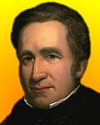 |  Joseph Paxton (1801-1865) was an English architect, designer of the architect of the building for the Great Exhibition of 1851 in London. The building was remarkable for its major use glass in its construction. Joseph Paxton (1801-1865) was an English architect, designer of the architect of the building for the Great Exhibition of 1851 in London. The building was remarkable for its major use glass in its construction.  Can you name this building? Can you name this building? |
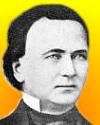 |  Walter Hunt died on 8 Jun of a certain year. He was the American inventor of the safety pin. He called it a "dress pin" on his patent, which he sold for $400 at a time of financial need. Walter Hunt died on 8 Jun of a certain year. He was the American inventor of the safety pin. He called it a "dress pin" on his patent, which he sold for $400 at a time of financial need.  In which decade was his safety pin design patented? In which decade was his safety pin design patented? |
 |  On 8 Jun of a certain year, creation of element 93, neptunium (symbol Np) was announced by Edwin M. McMillan and Philip H. Abelson working at the University of California at Berkeley. On 8 Jun of a certain year, creation of element 93, neptunium (symbol Np) was announced by Edwin M. McMillan and Philip H. Abelson working at the University of California at Berkeley.
 In what decade was neptunium made? |
|  On 8 Jun of a certain year, the first commercially-made ice cream was advertised in New York City by Mr. Hall of 76 Chatham Street. On 8 Jun of a certain year, the first commercially-made ice cream was advertised in New York City by Mr. Hall of 76 Chatham Street.
 In what decade was this advertisement made? |
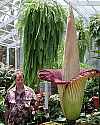 |  On 8 Jun 1937, the world's largest flower bloomed in New York Botonical Garden; it was a giant Sumatran calla lilly measuring 8 1/2 feet high and 4 feet in diameter. It has a distinctive fragrance. On 8 Jun 1937, the world's largest flower bloomed in New York Botonical Garden; it was a giant Sumatran calla lilly measuring 8 1/2 feet high and 4 feet in diameter. It has a distinctive fragrance.
 What does this fragrance imitate? |
When you have your answers ready to all the questions above, you'll find all the information to check them, and more, on the June 8 web page of Today in Science History. Or, try this link first for just the brief answers.
Fast answers for the previous newsletter for June 7: a method of evaluating an infant shortly after birth to assess its well-being; chloroform; artificial intelligence; Joseph von Fraunhofer; solar power; the decade including the year 1870; the decade including the year 1954.
|
 If you enjoy this newsletter, the website, or wish to offer encouragement or ideas, please send feedback by using your mail reader Reply button. If you enjoy this newsletter, the website, or wish to offer encouragement or ideas, please send feedback by using your mail reader Reply button. |
--
If you do not want to receive any more newsletters,
Unsubscribe To update your preferences and to unsubscribe visit
this link 






 This British biophysicist, born 8 Jun 1916, with James Watson, received a share of the 1962 Nobel Prize for Physiology or Medicine for their determination of the molecular structure of deoxyribonucleic acid (DNA), the chemical substance ultimately responsible for hereditary control of life functions. This accomplishment became a cornerstone of genetics and was widely regarded as one of the most important discoveries of 20th-century biology.
This British biophysicist, born 8 Jun 1916, with James Watson, received a share of the 1962 Nobel Prize for Physiology or Medicine for their determination of the molecular structure of deoxyribonucleic acid (DNA), the chemical substance ultimately responsible for hereditary control of life functions. This accomplishment became a cornerstone of genetics and was widely regarded as one of the most important discoveries of 20th-century biology. Can you name this man?
Can you name this man?
 John Smeaton, born 8 Jun 1724, was a English civil engineer and designer, regarded as the father of civil engineering in Britain. In 1756-59 he built the third lighthouse at Plymouth, Devon, using dovetailed blocks of portland stone. He was the first to recognize what constitutes a hydraulic lime when he discovered the best mortar for underwater construction to be limestone with a high proportion of clay. Smeaton also: constructed the Forth and Clyde Canal in Scotland between the Atlantic and the North Sea; built bridges in towns including Perth, Banff, and Coldstream, Scotland; and completed Ramsgate harbour, Kent. He introduced cast-iron shafts and gearing into wind and water mills, designed large atmospheric pumping engines for mines, and improved the safety of the diving bell.)
John Smeaton, born 8 Jun 1724, was a English civil engineer and designer, regarded as the father of civil engineering in Britain. In 1756-59 he built the third lighthouse at Plymouth, Devon, using dovetailed blocks of portland stone. He was the first to recognize what constitutes a hydraulic lime when he discovered the best mortar for underwater construction to be limestone with a high proportion of clay. Smeaton also: constructed the Forth and Clyde Canal in Scotland between the Atlantic and the North Sea; built bridges in towns including Perth, Banff, and Coldstream, Scotland; and completed Ramsgate harbour, Kent. He introduced cast-iron shafts and gearing into wind and water mills, designed large atmospheric pumping engines for mines, and improved the safety of the diving bell.) What is the name of the Plymouth lighthouse (known in a song)?
What is the name of the Plymouth lighthouse (known in a song)?
 Joseph Paxton (1801-1865) was an English architect, designer of the architect of the building for the Great Exhibition of 1851 in London. The building was remarkable for its major use glass in its construction.
Joseph Paxton (1801-1865) was an English architect, designer of the architect of the building for the Great Exhibition of 1851 in London. The building was remarkable for its major use glass in its construction.  Can you name this building?
Can you name this building? 
 Walter Hunt died on 8 Jun of a certain year. He was the American inventor of the safety pin. He called it a "dress pin" on his patent, which he sold for $400 at a time of financial need.
Walter Hunt died on 8 Jun of a certain year. He was the American inventor of the safety pin. He called it a "dress pin" on his patent, which he sold for $400 at a time of financial need.  In which decade was his safety pin design patented?
In which decade was his safety pin design patented? 
 On 8 Jun of a certain year, creation of element 93, neptunium (symbol Np) was announced by Edwin M. McMillan and Philip H. Abelson working at the University of California at Berkeley.
On 8 Jun of a certain year, creation of element 93, neptunium (symbol Np) was announced by Edwin M. McMillan and Philip H. Abelson working at the University of California at Berkeley. In what decade was neptunium made?
In what decade was neptunium made? On 8 Jun of a certain year, the first commercially-made ice cream was advertised in New York City by Mr. Hall of 76 Chatham Street.
On 8 Jun of a certain year, the first commercially-made ice cream was advertised in New York City by Mr. Hall of 76 Chatham Street. In what decade was this advertisement made?
In what decade was this advertisement made? 
 On 8 Jun 1937, the world's largest flower bloomed in New York Botonical Garden; it was a giant Sumatran calla lilly measuring 8 1/2 feet high and 4 feet in diameter. It has a distinctive fragrance.
On 8 Jun 1937, the world's largest flower bloomed in New York Botonical Garden; it was a giant Sumatran calla lilly measuring 8 1/2 feet high and 4 feet in diameter. It has a distinctive fragrance. What does this fragrance imitate?
What does this fragrance imitate? If you enjoy this newsletter, the website, or wish to offer encouragement or ideas, please send feedback by using your mail reader Reply button.
If you enjoy this newsletter, the website, or wish to offer encouragement or ideas, please send feedback by using your mail reader Reply button. 

Δεν υπάρχουν σχόλια:
Δημοσίευση σχολίου